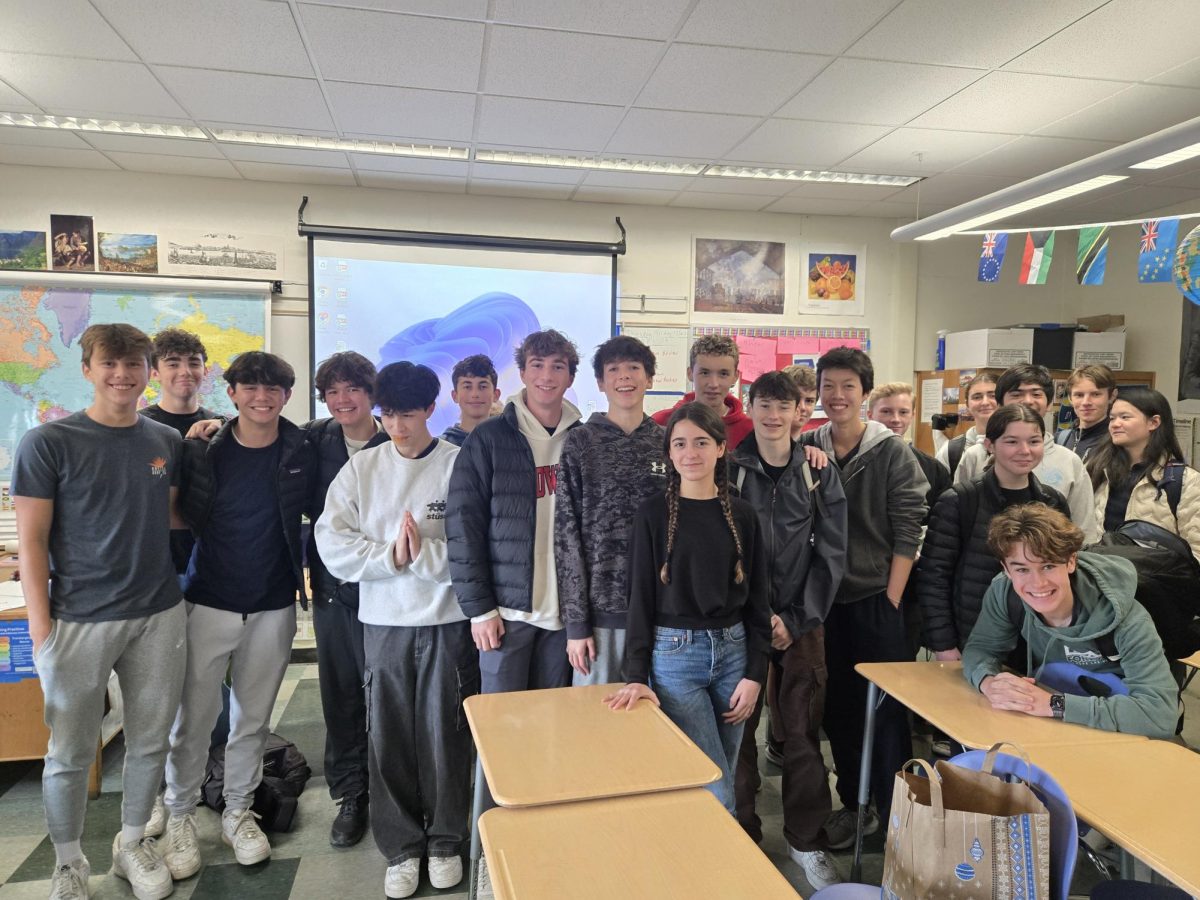Amid growing attention to gender-related issues in education, the Bark decided to investigate which classes at Redwood are heavily dominated by one gender, and why that may be.
The gender gap in AP and Honors classes is most prevalent in AP Economics, Honors Pre Calculus, and Honors Physics, which tend to be male-dominated, and in AP Literature Composition, and AP Spanish Language, which tend to be female-dominated. Additionally, Leadership, Peer Resource, and Link Crew, non-departmental classes, have seen many more girls than boys interested in the classes, according to their teachers.
Leadership, Peer Resource & Link Crew
In 2003, an article in Bloomberg Business called “The New Gender Gap” predicted that the 21st century could be the first “female century,” meaning females would take more leadership positions over males. Is that prediction correct?
For many years, Redwood has seen a higher number of girls who want to participate in Leadership, Link Crew and Peer Resource, according to teachers David Plescia, Erik Berkowitz, and Jessica Skieresz. The struggle to make classes gender-balanced has become difficult because there are fewer boys than girls willing to participate.
 In classes such as Peer Resource, where there are many applicants and few spots, it is easier for teachers to procure an equal number of girls and boys in the class.
In classes such as Peer Resource, where there are many applicants and few spots, it is easier for teachers to procure an equal number of girls and boys in the class.
Jessica Skieresz has been teaching Peer Resource for seven years, and has continuously seen more girls than boys apply for the class. This year, 14 boys applied to be in Peer Resource out of 45 total applicants.
“I’ve always just assumed that because Peer Resource is a class about social and emotional awareness and issues, that girls are just much more willing to talk about those things and address those issues, and that boys are maybe a little less inclined,” Skieresz said.
When students applied for the class last spring, the ratio of girls to boys was approximately three to one. In the future, Skieresz doesn’t expect to see a big change.
“I’ve always thought it might have something to do with who is in the class to begin with and what connections they have to boys,” Skieresz said. “There might be greater interest from certain groups of kids because ‘so and so’ is in it and they loved it, so it seems like a possibility, or something they want to experience too.”
Psychology teacher Jon Hirsch offered a possible explanation for why these classes attract more girls.
“The prefrontal cortex growth spurt happens on average earlier for females. This means the judgment center of your brain, the section that can manage priorities, self control, and abstract thinking, undergoes its growth spurt a little bit earlier in women,” Hirsch said.
A study in 2009 by the University of Iowa offers another explanation. It showed that the prefrontal cortex is also involved with social cognition and interpersonal judgment and is proportionally larger in females compared to males.
Peer Resource is not the only class with a gender imbalance Leadership has also faced challenges to balance out the gender gap. In the 15 years that David Plescia has taught the class, only two Associated Student Body (ASB) presidents have been boys.

This year, there are more male class officers than there have been in the past, but they are still heavily outnumbered by female officers. Out of the 25 total officer positions, eight are filled by boys, creating a three to one ratio of girls to boys in officer positions.
According to Plescia, interviews for applicants to Leadership are conducted by former and current ASB officers, who do their best to pick the people they believe are best suited to make decisions on behalf of the student body.
“We do try and get an accurate representation of the student body, but in the end, the people most suited for the class are accepted regardless of the gender,” said senior and current ASB Vice President Kendra Loo.
Link Crew teacher Erik Berkowitz has also noticed a gender gap between boys and girls in his class.
“It is sometimes harder for guys to risk involvement,” Berkowitz said. “There are always guys in the program and the guys do work just as hard as the girls and they are just as good at it. I think that there is something that is more socially acceptable for the young women to get involved than for the guys.”
Link Crew is composed of two different groups: A larger group of roughly 65 students who just participate in orientation, and a smaller group of students who meet Wednesdays before school in a formal class. Both the orientation group and the class have more girls than boys enrolled.
Berkowitz hopes that the new house system at Redwood will make people of all genders more willing to get involved in school activities like Link Crew.
Honors and AP Classes
Overall, more girls than boys enroll in AP and Honors classes at Redwood. This year, 891 girls and 784 boys enrolled, and these numbers include those who take more than one AP or Honors class.
In AP Economics class, Honors Physics, and Honors Pre Calculus, however, the trend is flipped.
Currently, there are 81 boys and 48 girls enrolled across five sections of AP Economics, though AP Economics teacher Ann Tepovich said that imbalance was more predominant seven years ago, when there were only three girls out of 27 total students in her class.
“The following year we tried gender-specific advertising. I held a meeting of information just for girls to try and say Econ is a great class and it’s not just a ‘boy class,’” Tepovich said. “The following year the classes were much more balanced.”
In Jessica Crabtree’s Honors Pre Calculus class, there have been a higher number of boys enrolled since 2012, when she started teaching the class again after teaching at Drake. This year, there are 17 girls and 36 boys in the class.
While boys have disproportionately enrolled in these math-based classes, AP Spanish Language teacher Deborah McCrea has seen more girls than boys take her class since she started teaching it five years ago. There are 50 girls and 27 boys enrolled across all of McCrea’s sections this year.
“We want students to be aware of their options so we send AP students into all of the 7-8 Spanish classes to present about what the class is like and what kind of things we do. I always make sure there is a boy and a girl presenting because if you are a boy, it might motivate you more to imagine yourself being in the class,” McCrea said.
AP English Literature and Composition has been consistently girl heavy as well.
Currently there are 36 girls and 15 boys enrolled in the class. Winkler has been teaching AP English Literature and Composition for roughly 12 years and has always noticed more girls in his classes.
“This year, we dropped all entrance requirements for AP Lit, but that doesn’t seem to have affected the choice on the part of male students,” Winkler said.
While there hasn’t been any specific data to support why some classes have more of one gender, Pediatric Neurologist Audrey Foster-Barber suggested that social norms can impact the choices of girls and boys.
“There isn’t a direct reflection of differences in male and female abilities, [but rather] a reflection of the societal norms, expectations, what is valued for a female or a male,” Foster-Barber said. “There are certainly differences between the male and female brains when it comes to communications, but not when it comes to calculations and learning the rote rules of science.”
Dominican University Professor Matt Davis, a specialist in human sexuality, also said that children’s choices are influenced by gender stereotypes.
“As soon as we are born and labeled male or female, we are kind of brainwashed into ‘these are the things that men do’ and ‘these are the things that women do,’” Davis said. “These stereotypes have an influence on our hobbies, interests, and careers.”
Another theory by Linda Gorman from the National Bureau of Economic Research posits that a teacher’s gender may encourage or discourage the student from performing well. Reading teachers, for example, are mostly women, which is why a large fraction of boys underperform in English classes, the theory states.











